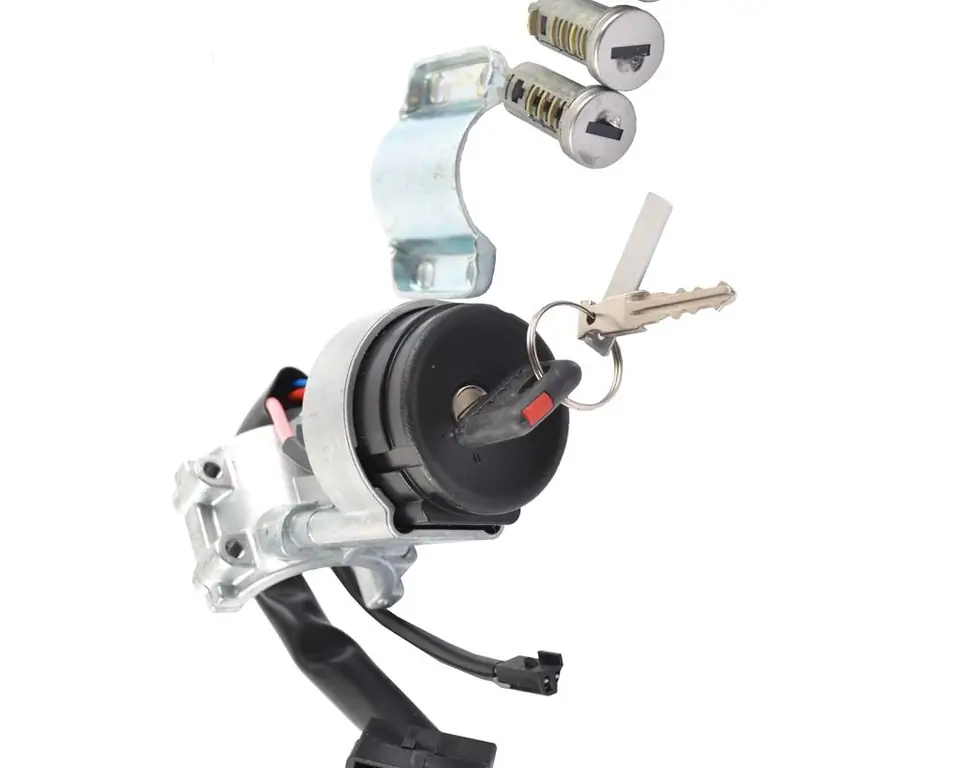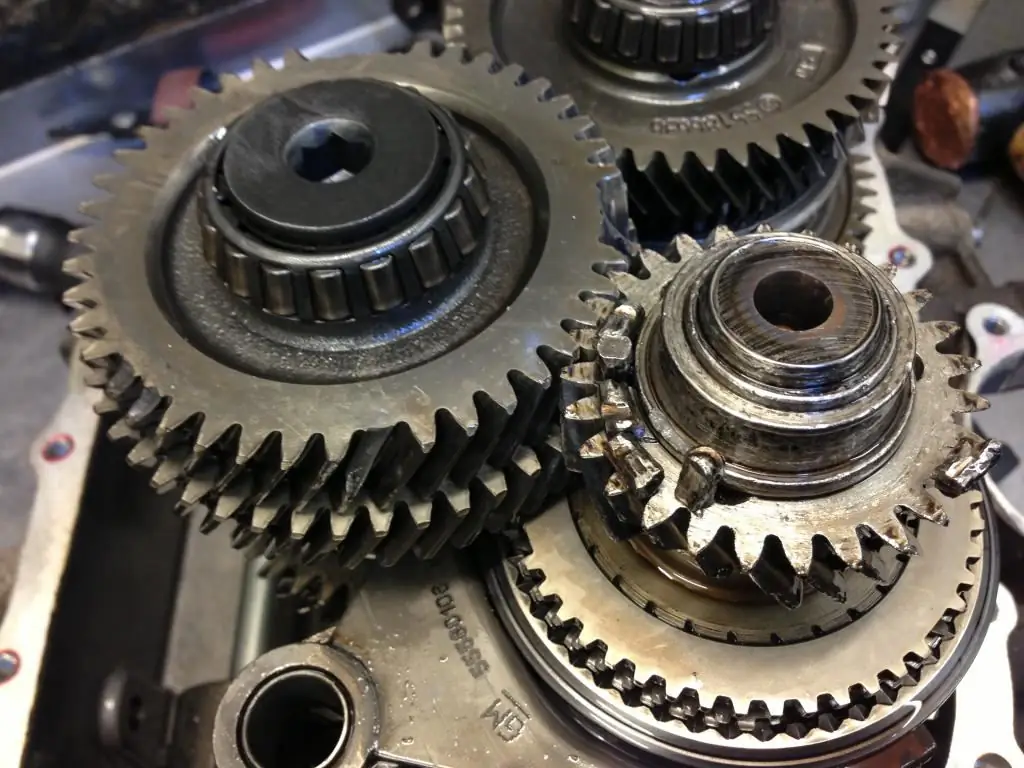2025 Author: Erin Ralphs | [email protected]. Last modified: 2025-01-22 21:14:09
“Thorsen” is one of the varieties of self-locking differentials. Such a mechanism is available both on domestic cars and on foreign cars. The principle of operation of the Torsen differential is based on the changing friction of mechanical parts, which leads to the distribution of torque between the wheelset.

Destination
So, what is this mechanism for? The simplest differential is able to distribute power or torque between two wheels equally, evenly. If one wheel is slipping and cannot catch on the roadway, then the torque on the second wheel will be zero. Improved models, and the vast majority of them are differentials with a self-blocking mechanism, are equipped with a system that blocks the posted axle shaft. The torque is then distributed so that maximum power is delivered to the wheel that retains good traction.
The Thorsen differential is the best solution for an all-wheel drive vehicle,operated mostly in harsh conditions. “Thorsen” is not the name of the developer, but an abbreviation. This means Torque Sensing or Torque Sensing.
About the history of creation
The Thorsen differential was first introduced in 1958. The American engineer V. Glizman developed the design and principle of operation. The patent for the serial production of this self-locking mechanism was received by the Torsen company, whose name became the name for the device.

Device
This mechanism is made up of familiar elements - the device is similar to any planetary node. The main details can be distinguished - this is the body, worm gears, satellites.
As for the general concept, there are not many differences compared to ordinary mechanisms. The housing is rigidly attached to the drive unit of the transmission. Satellites are installed inside the case. They are fixed on special axles. The satellites are in rigid engagement with the gears of the axle shafts. The gears of the semi-axes are fixed to the shafts, to which the torque is transmitted.
And now for the Torsen mechanism itself. In this node, the gear of the semi-axes has helical teeth. It is nothing but a traditional worm shaft.
Satellites are a pair of helical gears. One element of this pair forms a worm pair with the axle gear. A pair of satellite gears can also interact with each other due to spur gearing. The design has as many as three satellites, each of whichrepresents a pair of gears.

Operation principle
Let's see how the Thorsen differential works. Let's consider this on the example of an interwheel assembly. When a pair of drive wheels move in a straight line, they both encounter the same resistance. Therefore, the mechanism distributes the torque evenly between both wheels. When driving straight, the planets are not involved, and the force is transmitted directly from the cup to the side gears.
When the car enters the turn, the inner wheel experiences more resistance and its speed decreases. The worm pair of the inner wheel starts to work. The side gear rotates the satellite gear. The latter transmits torque to the second gear of the axle shaft. This increases the force on the outer wheel. Since the difference in torque on the two sides is small, the friction in the second worm pair is also low. In this case, self-blocking will not occur. This is what the Thorsen differential principle is based on.

When one of the driving wheels of the car is on a slippery surface, its resistance decreases. Torque tends to this wheel. The half shaft spins the satellite gear, and it transmits torque to the second satellite. In this case, there will be self-braking. The satellite gear is not able to act as a driving element and cannot rotate the side gear due to certain features of the worm gears. Therefore, the worm pair jams. And whenjamming, it will slow down the rotation of the second pair, and the torque on each of the semi-axes will even out.
Three operating modes
If we consider the full principle of operation of the Torsen differential, then it must be said that the system can operate in three different modes. The specific mode depends on the level of resistance on the wheel. When it is the same, the torque is evenly distributed.

If the resistance on one of the wheels increases, then the worm pair is switched on, and thus the second pair is activated, despite the small resistance on it. This leads to the redistribution of the moment as needed. In this case, one wheel will slow down. The second one will spin faster.
If resistance is completely lost on one of the tires, then this will be accompanied by blocking or jamming of the worm pair due to high friction. Then the second pair immediately slows down. torque equalizes. The operation of the Torsen differential in this mode is similar to rectilinear movement.
Three types of “Thorsen”
In the first version, the gears of the leading semi-axes, as well as satellites, are used as worm pairs. Each axle has its own satellites, connected in pairs with those on the opposite axle. This connection is carried out using a spur gearing. The axes of the satellites are perpendicular to the semiaxes. This version of the Torsen differential is recognized as the most powerful among all similar designs. It is capable of operating in a very wide range of torque.
The second option differs in that the axes of the satellites are parallel to the axle shafts. Satellites in this case are installed differently. They are located in special cup seats. Pair satellites are connected by helical gearing, which, when wedging, participates in blocking.

The third option is the only one among the entire series where the design is planetary. It is used as a center differential in all-wheel drive vehicles. The axes of the satellites and the drive gears are also parallel to each other. Due to this, the unit is very compact. Thanks to the design, it is initially possible to distribute the load between the two bridges in a ratio of 40:60. If a partial block is triggered, the proportion may deviate by 20%.
The advantages of differentials of this design
This design has a lot of advantages. This mechanism is installed because the accuracy of its work is extremely high, while the device works very smoothly and quietly. Power is distributed between the wheels and axles automatically - no driver intervention is needed. The redistribution of torque does not affect braking in any way. If the differential is operated correctly, then it does not need to be serviced - the driver is only required to check and periodically change the oil.
That is why many drivers put the Torsen differential on the Niva. It also uses a permanent all-wheel drive system and no electronics, so extreme sports enthusiasts often change the standard differential to this unit.
Flaws
There are also disadvantages. This is a high price, because inside the structure is quite complicated. Since the differential works on the principle of thorns, this increases fuel consumption. With all the advantages, the efficiency is rather low when compared with similar systems of another type. The mechanism has a high predisposition to jamming, and the wear of internal elements is quite intense. Special products are needed for lubrication, since a lot of heat is generated during operation of the assembly. If different wheels are installed on the same axle, then the parts wear out even more intensively.

Application
The node is used as an inter-wheel and inter-axle mechanism for the redistribution of torque. A unit of this kind is installed on many foreign cars, but it received the widest popularity on the Audi Quatro. Manufacturers of all-wheel drive cars very often prefer this particular design. The Torsen differential is installed on the VAZ for its comparative simplicity and instantaneous operation.
Recommended:
Cross-axle differential: types, device, principle of operation

Cross-axle differential: varieties, specifications, features, device, photo. Cross-axle differential: principle of operation, types, design, operation, purpose. Description of cross-axle differentials: MAZ, KAMAZ
The principle of operation of the variator. Variator: device and principle of operation

The beginning of the creation of variable programs was laid in the last century. Even then, a Dutch engineer mounted it on a vehicle. After such mechanisms were used on industrial machines
"Lada-Kalina": ignition switch. Device, principle of operation, installation rules, ignition system, advantages, disadvantages and features of operation

Detailed story about the ignition switch Lada Kalina. General information and some technical characteristics are given. The device of the lock and the most frequent malfunctions are considered. The procedure for replacing with your own hands is described
Planetary gearbox: device, principle of operation, operation and repair

Planetary gears are among the most complex gear boxes. With a small size, the design is characterized by high functionality, which explains its widespread use in technological machines, bicycles and caterpillar vehicles. To date, the planetary gearbox has several design versions, but the basic principles of operation of its modifications remain the same
How to properly brew a differential? The principle of operation of the differential. Driving Tricks on a Welded Differential

The device of the car assumes the presence of many nodes and mechanisms. One of these is the rear axle. "Niva" 2121 is also equipped with it. So, the main assembly of the rear axle is the differential. What is this element and what is it for? The principle of operation of the differential, and how to brew it correctly - later in our article

